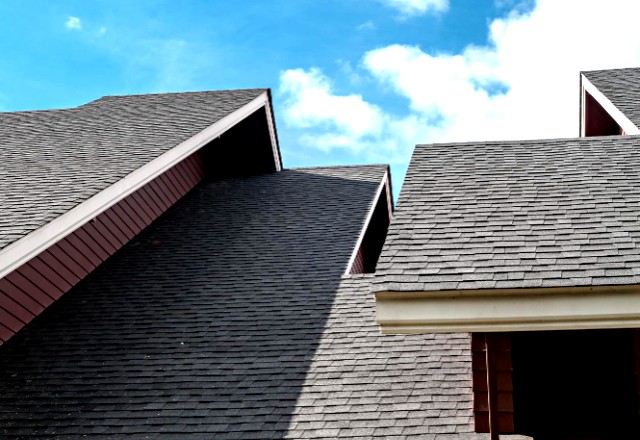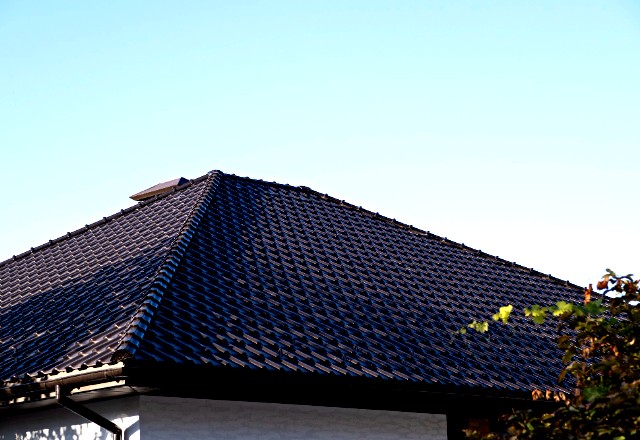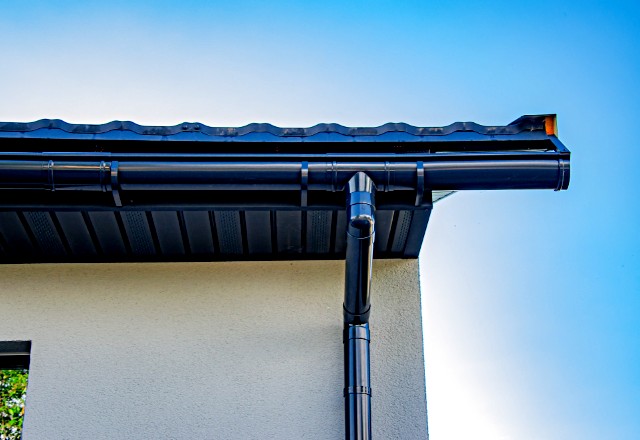What is drip edge
A drip edge is roofing component represented by an L-shaped piece of metal that is installed along the perimeter edges of a roof. The purpose of a drip edge on roof is to allow water to effectively run off while protecting roof edges and directing water away from susceptible areas. Replacing old or damaged drip edge roofing is important for maintaining roof integrity.
Why to Replace
- To prevent leaks and water damage. Cracked or missing elements can allow water seepage, leading to wood rot, moss and mold growth and interior damage. Moss removal adds expences to your roof maintenance routine. Drip edge replacement closes up gaps.
- To improve roof drainage and preventing ice dams. An intact drip edge allows stormwater runoff into gutters, preventing ice dam buildup which can lift shingles.
- To stop pest access behind gutters. Replacing drip edge eliminates access points for pests to get under roofing materials.
- To update appearance of aging roof edges. A new drip edge provides a straight, finished look to roof edges.

When to Replace Drip Edge
Some signs that indicate it’s time for replacement include:
- Visible cracks, damage, or deterioration in the drip edge roofing
- During roof shingle replacement or full re-roofing projects
- Noticing leaks, water pooling or ice dam issues
- Rust/corrosion spots along roof edges
Preparation for replacement
Before you install a new drip edge on a roof:
- Thoroughly inspect the entire roof perimeter
- Take measurements to determine the linear footage needed
- Have necessary tools – ladder, utility knife, tin snips, hammer, sealant
- Purchase new material for replacement

How to Choose the Right Drip Edge for Roof
When selecting the right type of drip edge for your roof, there are a few important considerations:
Drip Edge Materials
Common materials include, but are not limited to:
- Aluminum — lightweight, resistant to rust and available in a variety of colors for coordination. It is generally the least expensive option and a popular choice.
- Galvanized steel — offers increased durability and strength over aluminum, often with baked enamel coatings for extra longevity. Steel conducts less cold than aluminum.
- For a unique look, opt for copper option, though it tends to be the costliest option. Copper naturally develops a protective green patina over time.
Color
- Match the color to your existing shingle drip edge or roofing if possible for a subtle finish. Consider coordinating with home exterior paint color as well.
- For an accent look, choose material in a contrasting color like stainless steel over black shingles.

Style
- Standard — comes in 10’ lengths, need trimming during drip edge install. Custom bent pieces available.
- Consider decorative styles, like bold profiles or scalloped edges on flat roof drip edge designs.
Size/Shape
- Use a minimum vertical flange height of 3-4” for proper overlap with underlayment and shingles.
- Choose standard 6 inch drip edge width or wider 8”-12” sizes for extra roof runoff protection.
- Shape needed is based on roof type—rectangular for sloped and L-shaped for flat roof.
When evaluating options, assess your roofing needs, climate, budget and the overall look you want to achieve before making a decision. Proper installation is also key, so speak to a roofer if unsure. Investing in premium option ultimately guards against leaks over time, saving on repairs.
Step-by-Step Process How to Replace Drip Edge
- Carefully pry out and remove the existing construction using a flat pry bar
- Clean underlayment edges and remove any old nails or debris
- Apply 1/4” bead of roofing sealant along the roof edges
- Align and attach new custom-fit planks, securing with nails every 12”
- Seal underside exterior edges with non-hardening sealant
- Inspect for tight fit with no gaps
- Make any final adjustments as needed for optimal functionality

Pro Tips on How to Install Roofing Drip edge Safely
- Follow OSHA safety standards for roof access and fall protection
- Make custom bends for non-straight roof shapes
- Replace associated drip edge and gutters at the same time when possible
Installing new, high-quality roofing drip edge can go a long way in safeguarding your roof from expensive water damages. Pay attention to any signs of deterioration and address problems promptly. With the right materials and proper technique, a DIY replacement project can significantly extend your roof’s lifespan.
When to Call a Pro for Drip Edge Installation
While a replacement project may seem straightforward, there are times when it’s best to have a roofing professional handle the install.
Safety is a top concern when doing any roof work. Roofers have special equipment and training for safely accessing and moving around on steep, tall rooflines. Rather than risk dangerous falls, property damage or OSHA violations, contact a qualified roofing contractor to take on the risky process of tearing out old items.
Additionally, poor installation can result in serious leaks or other issues down the line. Improper seam sealing or failure integrateion with roof underlayment can undermine the protection it provides. A seasoned roofing professional has the right techniques to ensure the construction diverts water properly without gaps.
In some cases, local building codes require that certain roof modifications are completed by a licensed contractor only. Before attempting DIY replacements during a full roof replacement, consult your municipal regulations regarding roofer licensing, permits and inspection requirements. Steep fines can apply for non-compliance. Leave your roof work to the experts from a reputable roofing company instead.
FAQs
What are the benefits of drip guard roofing?
Is there a difference between standard and clay drip edge?
Are drip edges effective against wind-driven rain, and what types are best suited for areas with strong winds?
What is the difference between gutter aprons and standard drip edges, and how do they contribute to roof protection?
Disclaimer: The information contained in this article is for general guidance and informational purposes only. While we have made every attempt to ensure accuracy and provide helpful DIY advice, Advance Roofing LLC makes no representations or warranties of any kind, express or implied, about the completeness or suitability of the guidance provided. Any reliance placed on such information is therefore strictly at your own risk. Roof replacements and installations should be performed by licensed, bonded and insured professional roofing contractors only. Otherwise it can result in code violations, denial of roof warranty coverage, fines, or serious property damages for which Advance Roofing LLC assumes no liability. We strongly recommend contacting certified Advance Roofing LLC roofers for an accurate assessment and quote on any roofing project, large or small. For urgent repairs, always seek assistance from qualified tradespeople for your own safety.



 509-201-4190
509-201-4190
